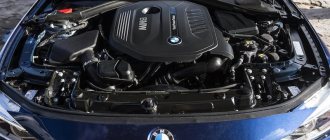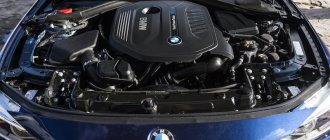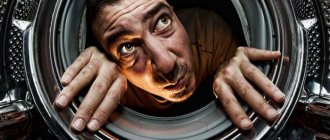Horsepower (hp) is a non-system unit of measurement of power. Currently, it has officially been phased out in Russia (the standard SI unit for expressing power is the watt), but still continues to be widely used in the auto industry as an indicator of engine power.
In 1789, Scottish engineer and inventor James Watt coined the term "horsepower" to indicate how many horses his steam engines could do.
You should know that horsepower is not the maximum, but the average indicator of the power a horse can maintain for a long time. For a short time, the average horse can develop a power of about 1000 kg * m / s, that is, the power of one horse is 13.3 horsepower.
Basic units of engine power and their designation
1. Horsepower (735.49875 W). Denoted as: hp (this is netto engine power, measured using engine auxiliary units, such as muffler, generator), bhp (this is gross engine power, measured without the use of additional units).
You can also find other designations: PS (German), CV (French), pk (Nid.).
In English-speaking countries, horsepower is still more often equated to 745.6999 W, which is approximately equal to 1.014 European horsepower.
2. Watt
Since the description of the watt is beyond the scope of this article, we will not touch on it here.
Types of karting
There are 3 main groups:
- Rental. This species is popular among amateurs and has no difficulties. A person comes to a special site - a karting track - undergoes a short instruction and receives equipment. You pay for the time, and while it is running, you can do laps. Their number is limited only by capabilities and skill. However, we must remember that a person is engaged in simple rides. Real karting is a serious sport.
- Sports with a team. If ordinary kart racing is not enough, then you need to move to a higher level. You should find a coach and a team. They will help you resolve all your issues, select equipment, and teach you how to drive a kart. Of course, all this will cost a lot of money and not everyone can afford it.
- Sports without a team. This type of karting is suitable for professionals. Here it is necessary to take into account that the kart is not intended for long-term use and requires frequent repairs.
How is horsepower calculated?
Horsepower is a conventional and ambiguous unit of measurement of power.
In Russia and almost all European countries, horsepower is defined as 75 kg*m/s (metric horsepower), that is, as the power sufficient to lift a load weighing 75 kg to a height of 1 meter in 1 second. In this case, 1 liter. With. is exactly 735.49875 watts.
The maximum power that a horse can develop is usually called boiler horsepower. You can easily calculate your maximum power. To do this, you need to measure the time t during which you run up the stairs of height h and substitute it into the formula: m*h/t, where m is the mass of your body.
To determine engine power, special stands are used, more about this is written below.
Physical quantities
Contains information about basic, additional and derived units CIF physical quantities| We are on social networks Join us! Found a mistake? Any suggestions? Let us know |
| This calculator can be inserted into a website or blog. We will create a calculator for you |
| Embed code: Copy and paste this code onto your page where you want the calculator to appear. | |
This is interesting: How to turn off the display on a pioneer radio
How is engine power measured?
Engine power is measured mainly to assess the effectiveness of tuning.
To determine engine power, there is only one accurate way: remove it from the car and install it on a special stand. Removing and installing an engine is a rather labor-intensive and expensive process that only automakers and serious racing teams can do.
For a less accurate measurement of power, dynamometer power stands are used (such as in the photo), which allow you to take readings “from the wheels”. The result can be influenced by: tire pressure, their grip properties, tire temperature (during measurement the tread gets very hot) and even the degree of attraction of the car with safety lines.
Measuring technique
The warmed-up car starts in first gear, accelerates to 40–50 km/h, after which the last gear is engaged, the gas pedal is pressed all the way and acceleration simulation begins. Upon reaching maximum speed (from the moment the power drop begins, visible on the monitor), neutral gear is engaged.
The measurement result is displayed in the form of a graph that shows the dependence of power on engine speed (blue curve - in horsepower).
Energy in dietetics and sports
Calories in dietetics
These amounts of sugar, apple, banana and salami contain one food calorie
Energy in sports and nutrition is usually measured in kilojoules or food calories. One such calorie is equal to 4.2 kilojoules, one kilocalorie, or a thousand calories used in physics. By definition, one food calorie is the amount of energy required to heat one kilogram of water by one kelvin. In dietetics, food calories are usually referred to simply as calories, which is what we will do later in this article. This sometimes causes confusion, but usually the reader can tell from the context which units are being referred to. Most foods contain calories. For example, one gram of fat contains 9 calories, one gram of carbohydrates and proteins contains 4 calories each, and alcohol contains 7 calories per gram. Some other substances also contain calories. This energy is released during metabolism and is used by the body to maintain life.
People trying to lose weight often count the calories they eat and subtract the calories they use during exercise. This is done to compare the number of calories not used for physical activity with the daily energy needs of the body in a relaxed state. Typically, to lose weight, the number of calories remaining must be less than what your body needs to keep you at rest. At the same time, doctors and nutritionists consider it dangerous to consume less than 1000 calories per day. The energy needs of the body in a state of rest can be calculated using a formula that takes into account the age, height, and weight of a person. This formula is designed for the average person, but each body stores and uses energy differently, depending on its needs. Therefore, it is not always possible to lose weight, even consuming fewer calories than the body requires according to this formula. The body often adapts to a lack of calories by slowing down its metabolism. As a result, the need for energy decreases, and calculations of a person’s daily energy needs using the formula lead to erroneous results. Despite this, many nutritionists recommend that those wishing to lose weight keep a daily record of their calorie intake.
Photos from the archives of iStockphoto.com
Calorie content
- an important concept in dietetics, which helps determine how energetically beneficial a given food is for the body. Calorie content is calculated by determining the number of calories in one gram of food product. Low calorie foods usually contain a lot of water. It fills the stomach, and a person feels full. As a result, it consumes fewer calories compared to other foods. For example, one hundred gram chocolate bar contains 504 calories. For comparison, such a chocolate bar will take a little less than half a glass. One and a half cups, or 320 grams, of low-fat, skinless, white cooked turkey contains about the same amount of calories. The same amount of calories is contained in 6.3 kilograms of cucumbers, that is, 25 cups. The same example with reduced portions looks like this: About 50 calories are contained in one chocolate candy, a tablespoon of turkey, and six cups of cucumbers. After such a portion of cucumbers, you are unlikely to want to eat, and after one chocolate candy, many will reach for a second and third. High calorie foods are usually unhealthy fatty and sugary foods that should be avoided. It is very useful for people on a diet to know the calorie content of different foods, but do not forget that when creating a menu, it is necessary to take into account not only the calorie content, but also the overall usefulness of each product. To achieve maximum results and improve your health, your diet must be balanced.
The nutritional value
- another useful concept in nutrition. This is the ratio of nutrients and beneficial substances needed by the body, such as vitamins, fiber, antioxidants and minerals, to the energy value of food. Thus, foods with high nutritional value contain a large amount of nutrients for each calorie of the product. Conversely, there are foods with “empty calories,” that is, with very little nutrients and low nutritional value. Alcohol, sweets, chips are some examples of such foods. It is best to exclude them from the diet, or at least limit them, because they do not provide the body with enough nutrients necessary for life.
Calories in sports
Energy is needed by humans and animals to maintain basal metabolism, that is, the body's metabolism at rest. This is the energy to maintain the functioning of the brain, tissues, and other organs. Energy is also needed for everyday physical activity and exercise. With a decrease in fat and an increase in muscle mass, the basal metabolism accelerates, and the need for energy increases. Therefore, any program for improving the body and losing weight should be based not only on reducing fat, but also on increasing muscle mass. To do this, it is important not only to eat right, but also to exercise, especially exercises that help develop muscles.
The amount of energy expended during exercise depends on whether it was aerobic or anaerobic. During aerobic exercise, oxygen breaks down glucose, releasing energy. During anaerobic exercise, oxygen is not used for this process; Instead, energy is produced by the reaction of creatine phosphate with glucose. Anaerobic exercise promotes muscle growth and is short-term and intense. Examples of such sports are sprinting and weightlifting. They cannot be continued for long due to the fact that lactic acid is produced in the process of obtaining energy. Its excess in the blood causes pain, and if a person continues the exercise despite this, he may lose consciousness. Aerobic exercise, on the other hand, can be continued for a long time, since it is less intense and the main thing in it is endurance. Such exercises include long-distance running, swimming and aerobics. With their help, the endurance of the muscles of the heart and respiratory system develops, as well as fat is burned and blood circulation improves.
Café De Paris, Quebec, Canada
Energy and weight loss
Although a lack of energy, relative to expenditure, usually leads to weight loss, this is not always the case, and often after the initial weight loss a person stops losing weight, or even gains weight, despite strict adherence to the diet. This occurs because the body adapts to a lack of calories, for example, as a result of a slower metabolism. In such cases, it is advised to change the exercise routine and menu, for example, temporarily change the type of sport and try to change the daily calorie intake. For example, each day you can consume either more or less calories than the established daily value, or you can set a weekly calorie intake instead of the daily value.
It is very important to remember that the body needs muscle mass to maintain a fast and healthy metabolism. Therefore, healthy diets should be combined with exercise aimed at developing muscles. Fat weighs less than muscle, so when diet and exercise increase muscle mass and decrease fat mass, overall weight increases, despite the fact that the body becomes healthier. Therefore, when improving the health of the body, it is wrong to monitor only weight loss. The ultimate goal is better to set fat loss and muscle development. This applies to both men and women. In addition to weighing, you can measure the percentage of fatty tissue in the body or check for changes in the size of the waist, hips, and other parts of the body where the body stores fat. Nutritionists and trainers advise aiming to reduce the body fat percentage to 14-24% for women and 6-17% for men.
Energy drink Red Bull
Another diet option is to gradually increase or decrease the number of calories in food over a certain period of time. After this, you must always return back to the established norm. Nutritionists also advise diversifying the amount of food at each meal, as well as the main type of food. For example, you could try eating a small carb-rich lunch for lunch the first day, and then eating a large lunch of vegetables and protein the next day. The main thing is that the body does not get used to the same type of food and amount of calories at each meal, and cannot adapt to the lack of energy by slowing down the metabolism. Many diets and exercises aim to speed up your metabolism because it allows the body to burn energy rather than storing it as fat. Therefore, when creating a nutrition and exercise plan, it is necessary to remember this problem of adaptation of the body. It is also important to do anaerobic exercise to increase muscle mass. A system of different exercises to which the body cannot completely get used will also help avoid adaptation.
Energetic drinks
Advertisers often use the word "energy" for advertising purposes. For example, energy drinks are advertised to increase performance and alertness. They usually contain psychostimulants such as caffeine, a lot of sugar, and sometimes vitamins and herbal extracts. Psychostimulants are used to ensure that the body produces the maximum amount of energy in a short period of time. This increases blood flow, blood pressure, pulse, and temperature. More oxygen enters the brain, and feelings of vivacity, strength, and energy increase. Energy drinks, despite their name, should not be consumed during exercise as they disrupt the electrolyte balance in the body. The high content of psychostimulants does increase alertness for a short time, but soon after this a decline and “withdrawal” occurs, reminiscent of the period of withdrawal from sugar, caffeine and alcohol. Many experience other side effects, including nausea, vomiting, headaches, high blood pressure, and insomnia. Doctors recommend avoiding energy drinks. Using the body's natural energy and timely rest is much better for the body than using psychostimulants.
Literature
Author of the article: Kateryna Yuri
Scale giving an approximate idea of the engine power range
To get an idea of the power range of the engines, please refer to the following figure:
- 0-100 l. With. — small cars;
- 100-200 l. With. - cars with medium power engines;
- 200-500 l. With. — sports cars;
- 500 l. With. and more - racing cars and supercars.











